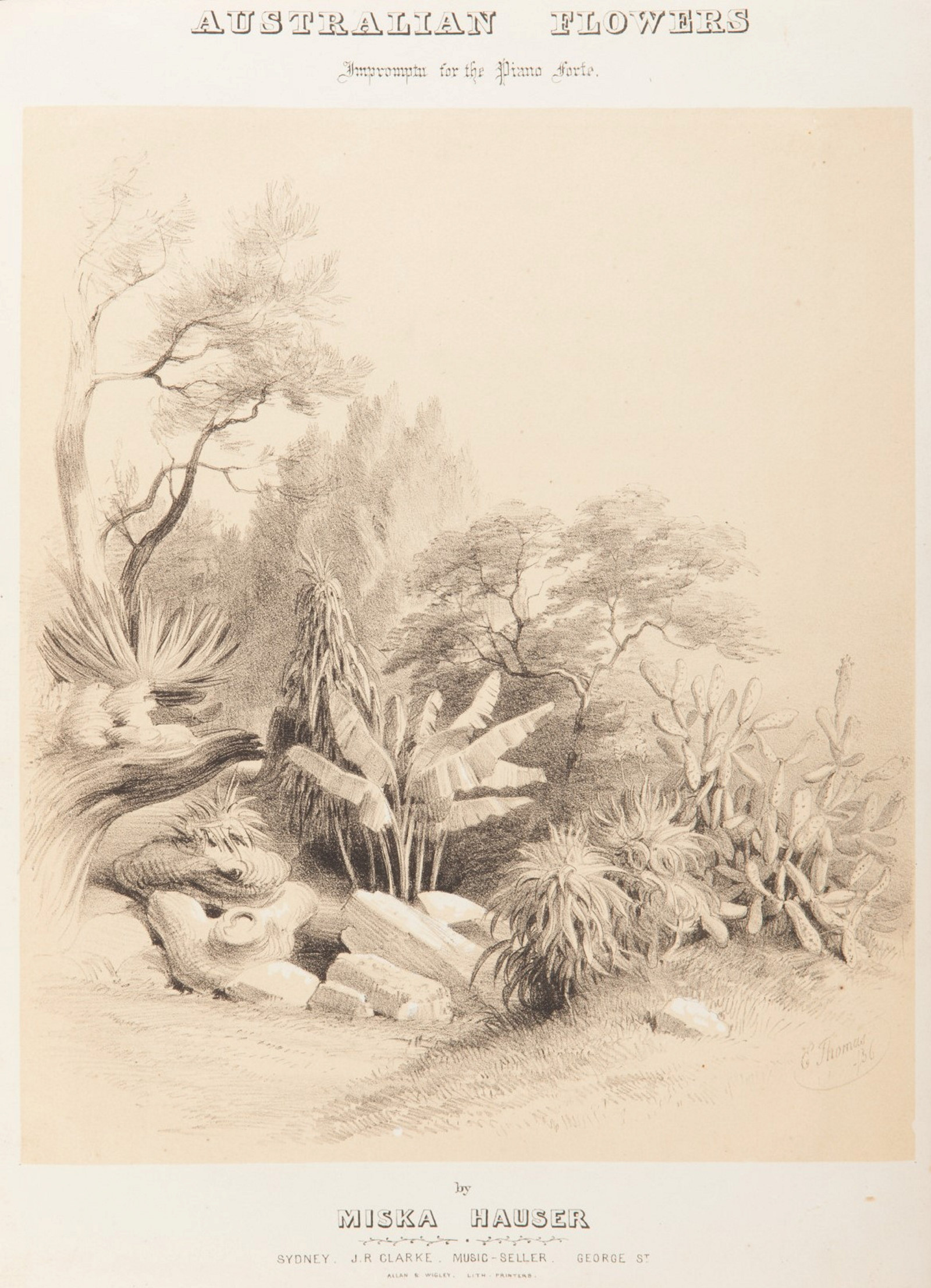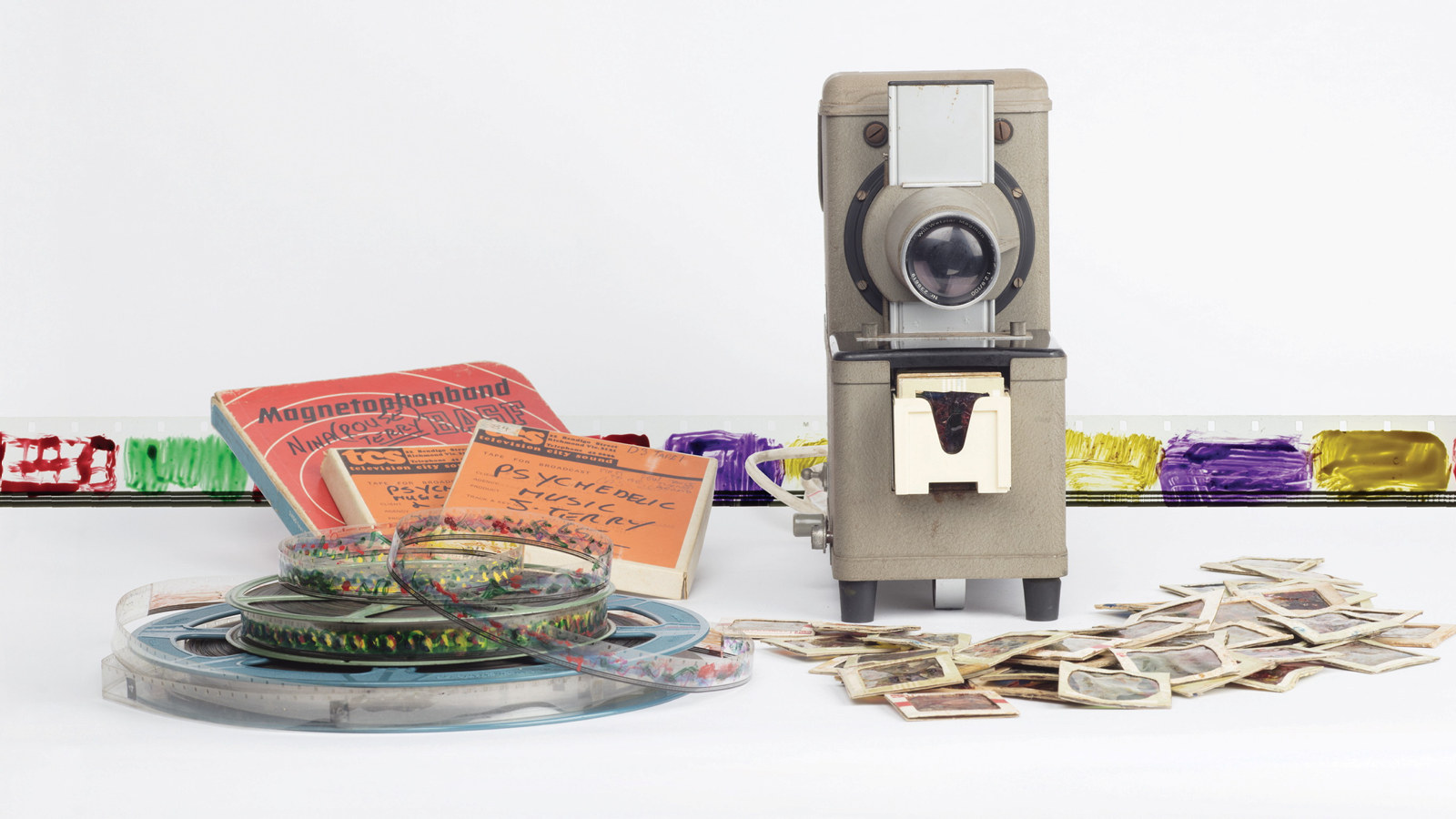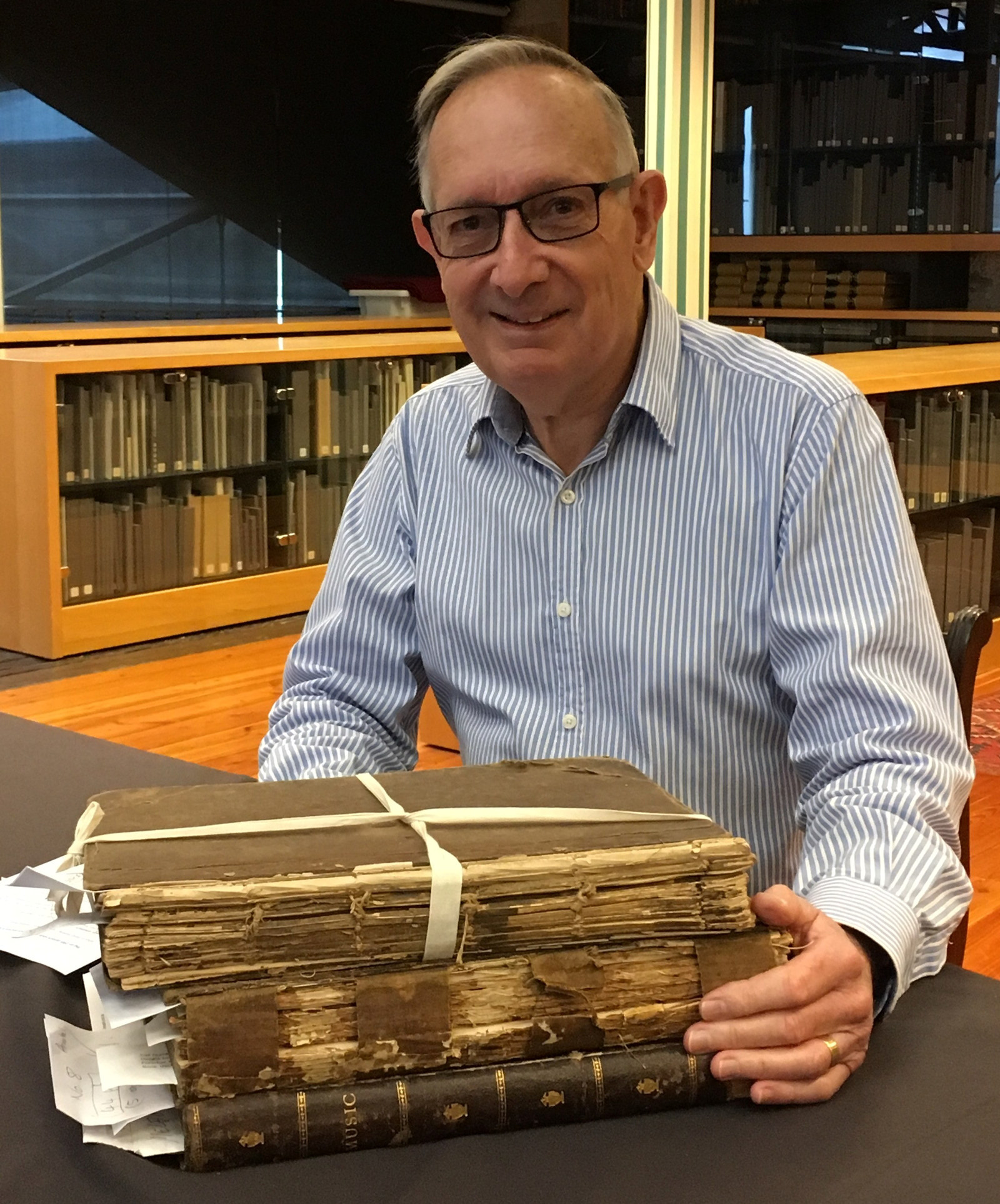Uncovering the trail of a lost masterpiece
Museums of History NSW volunteer, author and art historian Robert Holden has devoted his sleuthing skills to the search for a missing life-sized portrait of Irish-born prima donna Catherine Hayes last seen in a photograph from 1917.
On the hunt for our musical heritage
Over the past couple of years, I have been working closely with the staff at the Caroline Simpson Library & Research Collection (CSL&RC) to uncover the stories behind the recently acquired Stewart Symonds sheet music collection. This extraordinary collection consists of more than 1500 pieces of sheet music bound into 46 volumes that belonged to numerous individuals in NSW in the 19th century. Sprinkled through the collection are music publications specifically written for the prima donna Catherine Hayes or performed by Hayes during her Australian tours. While planning for a major new music exhibition at the Museum of Sydney, opening in August 2019, exhibition curator Dr Matthew Stephens, research librarian at the CSL&RC, asked me to dig deeper into the Catherine Hayes story. Eventually this raised what seemed a huge challenge: to find the location of a portrait of Hayes last seen in 1917!
Hayes’s Sydney debut received an ecstatic reaction: ‘Miss Hayes, on leaving the theatre, was received in the most enthusiastic manner by an immense multitude congregated outside, who were only deterred by her own entreaties, and the exertions of the police, from taking the horses from her carriage and dragging it to her hotel’. Not surprisingly, such adulation was described as having ‘all the deference due to Royalty’.3
After her first visit to Sydney, Hayes entertained audiences in Melbourne, Geelong and Adelaide. She then sailed to India and performed for British army personnel in Calcutta. Following performances in Singapore and Batavia (Jakarta), she arrived back in Australia in mid-1855. Thereafter, for more than a year she continued her conquest of Australian audiences.
Hayes’s Australian legacy
As well as leaving behind enraptured audiences, another outcome of Hayes visit to Sydney was her donation of a concert’s proceeds to the city’s most prominent charity, the Society for the Relief of Destitute Children. Ultimately, her donation contributed to the building of a Catherine Hayes Hospital in 1870 as part of the children’s asylum complex (now the Royal Hospital for Women) in the Sydney suburb of Randwick.
On her return to London in 1856, Hayes commissioned a life-size portrait of herself, specifically intended to be hung in her namesake hospital. This would be the culminating example of numerous images of the diva produced in her lifetime. One Sydney newspaper alone published seven portraits or views of Hayes during the first month of her arrival. Photographers here and elsewhere vied for exclusive rights to her image, particularly photographs of Hayes in costume for her most famous operatic roles. In Sydney, a demand for such images saw her portrait reproduced on the covers of three items of sheet music, two of which were specially written or adapted for the diva.
Furthermore, during her Australian visit almost a dozen songs were expressly dedicated to Hayes. In Tasmania, in 1856, wax medallion portraits were created to cater to a public clamouring for a memento of her visit. Much more substantial still were the casts made from a marble bust of Hayes (half life-size) in Melbourne in 1854.
But far surpassing any of these was the life-size portrait for the children’s hospital that opened in Randwick in 1870. It was in a history of the hospital that I first discovered the only known image of this lost portrait. It was a full-page photo in the asylum’s official history, published in 1917, which showed the asylum’s director sitting at his desk, where he was completely dwarfed by the impressive portrait of Hayes hanging behind him. And this is where my sleuthing really began!
Following the trail to the Sydney Conservatorium of Music
Since the asylum had long since closed I wondered if the portrait had remained behind when the complex became the Royal Hospital for Women, but my surmise was soon disproved. After that I trawled through newspaper archives, where I unearthed a few mentions of the portrait in the 50 years up to the eve of World War I.
Further determined research revealed that the asylum was requisitioned by the NSW Department of Defence as a repatriation hospital for Anzacs wounded at Gallipoli. Obviously the large portrait would then have been at some risk, as the future of the building had become uncertain. A brief news item in The Sydney Morning Herald for October 1915 clearly showed that the authorities were aware of this danger: ‘In all probability the large oil painting of Catherine Hayes … will be presented by the directors to the State Government. If it does not find its way to our National Art Gallery the portrait … should have a place of honour in the new Conservatorium of Music’.
A search of the conservatorium’s history revealed that its first director had only arrived from England weeks earlier, and such an acquisition would hardly have been a priority. By default, therefore, Sydney’s public gallery seemed the only available choice. And so the circuitous path took me to the archives of the Art Gallery of NSW. My search seemed to be coming to a successful end when I found a note in the gallery’s minutes. In November 1915 they recorded that the portrait was accepted conditionally: ‘That it should be held in safe keeping until a Portrait Gallery be started or a more suitable institution or place be selected for the Exhibition of same’.
Eureka! I thought. Success at last. But, sadly, my optimism was short-lived. Disappointingly, I could find no further mention of the portrait until a full decade later, in December 1925, when the gallery wrote to the conservatorium’s registrar soliciting his interest in this, perhaps unwieldy, burden on the gallery’s storage. The ensuing correspondence between the institutions finally revealed the dimensions of the portrait: 7’11” x 5’2”. It was indeed life-size.
By 1925, providentially, the conservatorium had initiated a much-strengthened program of operatic studies and performance. Appropriately, it accepted delivery of the portrait to be hung in its Verbrugghen Hall. I felt I could breathe a sigh of relief, having found its final secure home. However, further research into the Con’s history revealed that the portrait was completely unknown to its current regime. It was not hidden away in storage and had, seemingly, disappeared completely. Perhaps, I was told, it left the building when renovations were carried out in the 1970s and never came back. Even this distant date seems optimistic as there appears to be no-one living who remembers the painting.
Identifying the artist
Some time later I found a mention of the portrait in the colonial press that revealed the artist’s nationality: Italian. I surmised that any expatriate artist working in London must have been prominent and that he would have wanted to exhibit such a significant work before its departure to the colonies. And London’s Royal Academy was the obvious choice.
Having already drawn a blank in British newspapers, I now turned my attention to British art periodicals of the day. Hours later my patience was rewarded: ‘An elegant and simple portrait, of the size of life, presenting the lady dressed in black, before a plain green background’ was painted by an ‘A Baccani’ and exhibited at the Royal Academy in 1860. Further research revealed that the artist was Attilio Baccani (1823–1906), who was born in Rome and arrived in London in 1856, residing there for 50 years.
Footnotes
1. Illustrated Sydney News, 28 October 1854, p328.
2. Foreword by Richard Bonynge in Basil Walsh, Catherine Hayes, 1818–1861, the Hibernian prima donna, Irish Academic Press, Dublin, 2000.
3. Freeman’s Journal, 28 May 1904, p34.
Published on
Related
![Owner bound volume of assorted songs, in the collection of Rouse Hill House & Farm, 1850-1864. [music]](https://images.slm.com.au/fotoweb/embed/2023/10/615fb53b45ca4bfb8d979b01993be8c3.jpg)
‘Home! Sweet Home!’
It may come as a surprise that the expression ‘home, sweet home’ originates from a song title

'Australian Flowers'
Given that much of the music played in Australia in the 19th century had been imported, one might ask what constituted an ‘Australian’ piece of music?

1960s psychedelia at Rouse Hill House
In a short experimental period of music making, the talented young John Terry combined radical musical ideas with abstract imagery and the soundscape of Rouse Hill House
